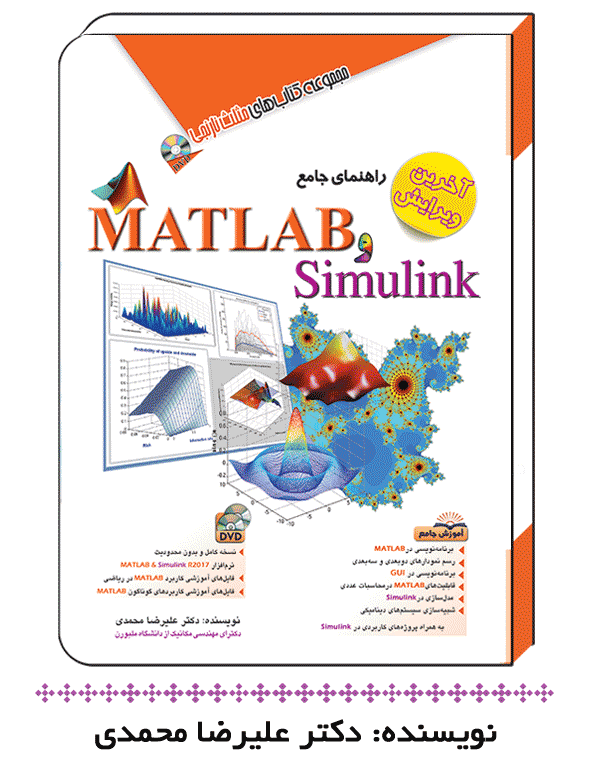

Open this file in Simulink by entering the following command in the MATLAB command window. Link and saving the file in the directory you are running MATLAB from.
#Matlab simulink download#
As an example, download the following model file by right-clicking on the following Scratch, previously saved model files can be loaded either from the File menu or from the MATLAB command prompt. In Simulink, a model is a collection of blocks which, in general, represents a system. Once you click on Blank Model, a new window will appear as shown below. When it starts, Simulink brings up a single window, entitled Simulink Start Page which can be seen here. Simulink is started from the MATLAB command prompt by entering the following command:Īlternatively, you can hit the Simulink button at the top of the MATLAB window as shown here: All Simulink operations should be done in your Simulink windows. Most images in these tutorials are not live - they simply display what you should see in Do not confuse the windows, icons, and menus in the tutorialsįor your actual Simulink windows. To use Simulink for system modeling, control, and simulation. You will modify and extend these system while learning Model files can be downloaded from the tutorials and opened in Simulink. The idea behind these tutorials is that you can view them in one window while running Simulink in another window.
#Matlab simulink windows#
Is supported on Unix, Macintosh, and Windows environments and is included in the student version of MATLAB for personal computers.įor more information on Simulink, please visit the MathWorks home. Simulink to the examples from the MATLAB tutorials to model the systems, build controllers, and simulate the systems. Simulink is integrated with MATLAB and data can be easily transfered between the programs. Many elements of block diagrams are available, such as transferįunctions, summing junctions, etc., as well as virtual input and output devices such as function generators and oscilloscopes. Gives the dimension of a vector or matrix, see also lengthĬreate state-space models or convert LTI model to state space,Īccess to state-space data.In Simulink, systems are drawn on screen as block diagrams. Generate grid lines of constant damping ratio (zeta) and natural Set(gca,'Xtick',xticks,'Ytick',yticks) to control the number and Returns the real part of a complex number, see also imagįind the value of k and the poles at the selected pointįind the scale factor for a full-state feedback system Print the current plot (to a printer or postscript file)įind the number of linearly independent rows or columns of a Returns a vector or matrix of ones, see also zerosĬompute the K matrix to place the poles of A-BK, see also ackerĭraw a plot, see also figure, axis, subplot. Was written to replace the MATLAB standard command nyquist to get more accurate Nyquist plots. Produces a minimal realization of a system (forces pole/zeroĭraw the Nyquist plot, see also lnyquist. Returns the gain margin, phase margin, and crossover frequencies, Simulate a linear system, see also step, impulse Linear quadratic regulator design for continuous systems, see Plot using log-log scale, also semilogx/semilogy Natural logarithm, also log10: common logarithm Produce a Nyquist plot on a logarithmic scale, see also nyquist1 Impulse response of linear systems, see also step, lsim Returns the imaginary part of a complex number, see also real Number format (significant digits, exponents)Īdd a piece of text to the current plot, see also text Linear-quadratic regulator design for discrete-time systems,Ĭonnect linear systems in a feedback loopĬreate a new figure or redefine the current figure, see also The controllability matrix, see also obsvĭeconvolution and polynomial division, see also conv Set the scale of the current plot, see also plot, figureĭraw the Bode plot, see also logspace, margin, nyquist1Ĭonvolution (useful for multiplying polynomials), see also deconv On writing MATLAB functions, see the function page.Ĭompute the K matrix to place the poles of A-BK, see also place For those functions which are not standard in MATLAB, we give links to their descriptions. In these tutorials, we use commands/functions from MATLAB, from the Control Systems Toolbox, as well as some functions which
#Matlab simulink how to#
Use help in MATLAB for more information on how to use any of these commands. Following is a list of commands used in the Control Tutorials for MATLAB and Simulink.


 0 kommentar(er)
0 kommentar(er)
